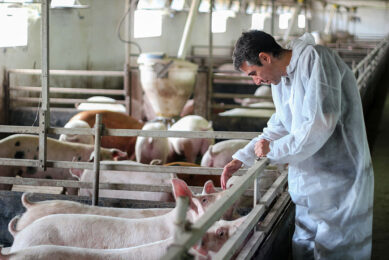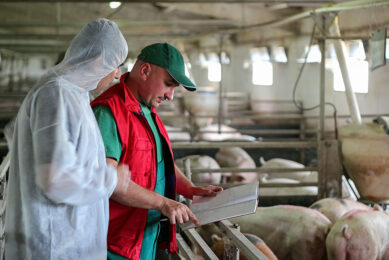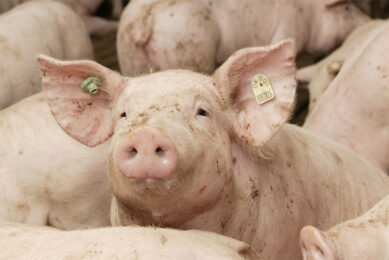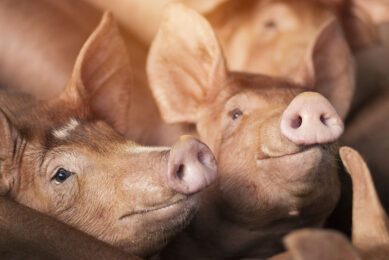Beta-glucans’ role in the battle against Lawsonia
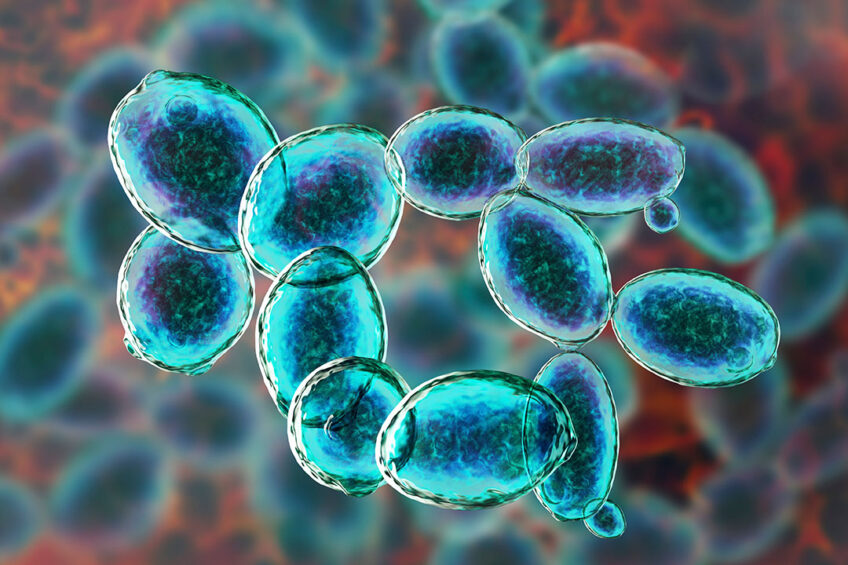
A healthy gut might be one of the strongest foundations of optimal health and performance in pigs. Gut health is strongly linked with diet composition. What nutritional interventions can producers use when dealing with one of the most invasive enteric pathogens – Lawsonia intracellularis?
Running a profitable pork business without diseases requires animals to be healthy. And that all starts with them having a healthy gut. A pig’s intestinal barrier is not only crucial for digestion and absorption of nutrients; it also plays a vital role in maintaining immune homeostasis. In addition, robust gut microbiota play an essential role in nutrient digestibility and protect against pathogens.
Intestinal health at risk
Lawsonia intracellularis, the causative pathogen for ileitis, has a damaging effect on intestinal health, leading to a compromised ability to digest and absorb nutrients and to reduced protection from external attacks. In addition, an infection caused by L. intracellularis can alter the pig’s intestinal microbiota, increasing the risk of dysbiosis and co-infection with other pathogens and accelerating damage to the intestines.
For many years, antibiotics were the first and quickest solution used to control an outbreak of ileitis. But this is not a sustainable and long-term approach, as it contributes to further spreading of antimicrobial resistance. In addition, antibiotics negatively impact the microbiota balance of the animal.
The quest for alternatives
To produce animal protein more sustainably, it has become important to find alternative controls for major diseases. This includes bacterin-based L. intracellularis vaccines. One live attenuated vaccine and one inactivated vaccine are available, each having advantages and disadvantages. The live attenuated vaccine – administered orally via drinking water, drench or liquid feed – requires an antibiotic-free window. Antibiotics do not interfere with the use of the inactivated vaccine, although individual pig administration by parenteral route is necessary. The use of these vaccines must be supervised by a veterinarian.
Nutritional interventions
Another route that can be taken to help manage L. intracellularis is via nutrition. Recent research in human medicine showed that yeast fractions high in beta-glucans have high potency for pathogen control. That sparked Phileo to investigate the potential of the specific yeast fractions that can help manage L. intracellularis in growing-finishing pigs.
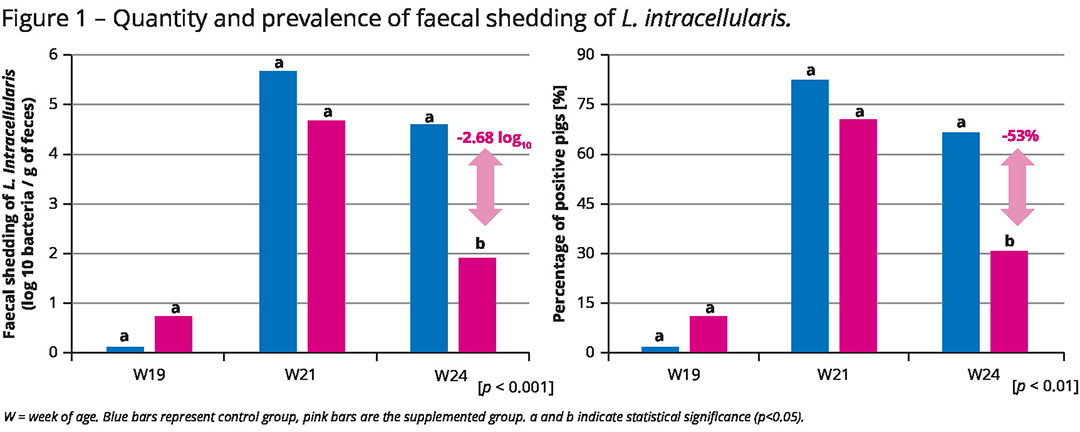
A trial was set up in Spain, where half the pigs received a base diet supplemented with yeast beta-glucans. The other half received only the base diet (control group). During the experimental period, shedding of L. intracellularis occurred in both groups of animals from 19 weeks of age. Shedding peaked at 21 weeks of age, at which point 82% of pigs in the control group were qPCR-positive. A significant reduction in L. intracellularis shedding and a significantly lower percentage of pigs were affected in the supplemented pigs compared to the control pigs at 24 weeks of age (see Figure 1).
Stronger and larger pigs
The reduction of L. intracellularis shedding illustrated that improved intestinal resilience was achieved, and this translated into improved growth performance in supplemented pigs. Growth was significantly improved during the L. intracellularis active infection period with an extra average daily weight gain of 84 g/day (+10%) in the supplemented pigs from 19 to 24 weeks of age. At the end of the trial, pigs that received the yeast beta-glucans were 4.1 kg heavier than the control pigs, with significantly fewer pigs recording a weight under 92 kg (7.0% vs 20.3%).
The researchers addressed the issue that timing of L. intracellularis outbreaks can vary between farms. In the Spanish trial, the active circulation of L. intracellularis was relatively late as it was revealed from 19 weeks of age by qPCR. When the bacteria circulate earlier in the production process, it can lead to even more negative effects on pig performance. It is expected that adding yeast beta-glucans earlier in the process can have a larger positive effect compared to what was shown in Spain.
Modulating microbiota
The microbiota composition is important for immunity and pathogen control. Increase of potentially beneficial bacteria and decreased detrimental bacteria can help to improve resilience – and hence limit the negative effect of dysbiosis due to L. intracellularis. The microbiota can be modulated through nutrition. Earlier data showed that yeast beta-glucans supplementation was associated with an increase in the relative abundance of potentially beneficial micro-organisms including Lactobacillus, Bifidobacterium, Ruminococcaceae and Prevotellaceae in piglets.
Data collected by Phileo on a farm where L. intracellularis was circulating showed that supplementation with yeast beta-glucans resulted in increased richness and diversity of the microbiome before the challenge kicked in. Subsequently, during the entire L. intracellularis circulation period, the trial showed an increase in good bacteria that are associated with better growth performance, and fewer pathogenic bacteria associated with the challenge.
New tool against pathogens
Management of animal diseases is moving away from solely curative measures to a more preventive, holistic and long-term approach. That is also true for ileitis, one of the major disease challenges faced by pig producers worldwide. Yeast beta-glucans show great potential for pathogen control, due to their ability to increase intestinal health and positively impact microbiome composition and structure in pigs. All those benefits make the animals more resilient, prevent dysbiosis in the gut and help them cope better with enteric disorders caused by L. intracellularis.
While live yeast is already widely used as probiotics in animal diets for a range of performance and health benefits, it is now possible to add yeast beta-glucans as a new promising tool for nutritionists and veterinarians to help control unwanted bacteria such as L. intracellularis.
References are available on request.



